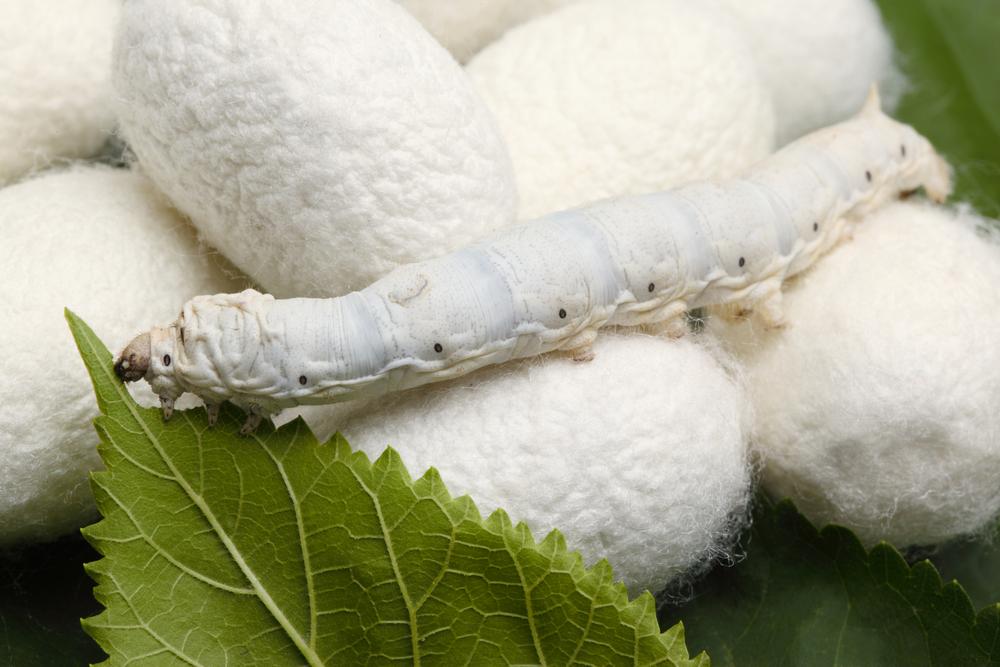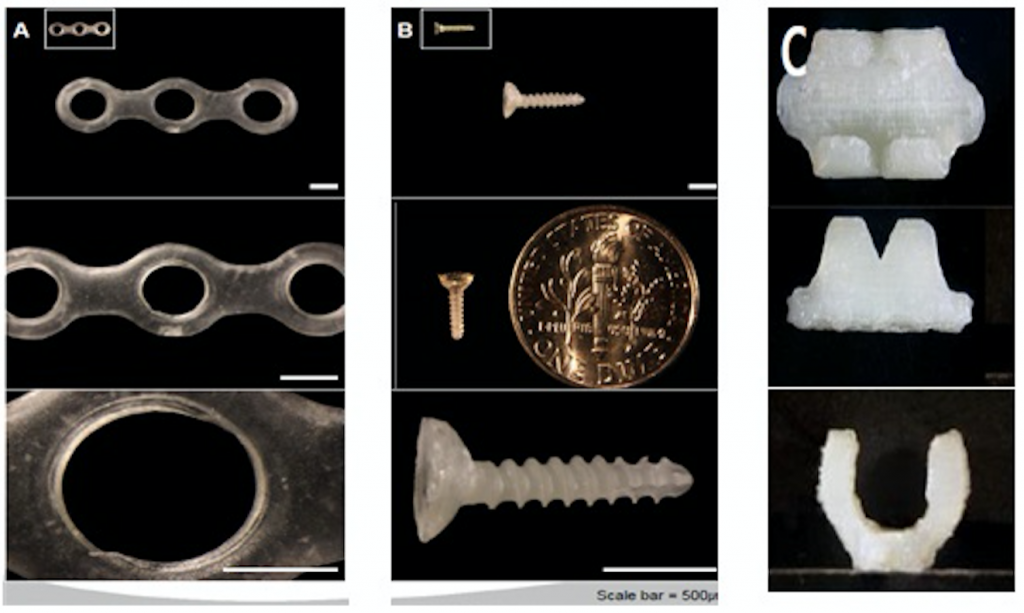Fixing Broken Bones With Silk: South Korean Researchers Develop and Test Biocompatible Silk 3D Printing Material
 When most people think of silk, they usually think of delicate, shimmery material that’s soft to the touch. Silk, however, is anything but delicate. A strand of silk is extremely strong, despite its gossamer appearance; consider its purpose in nature. A silk cocoon, from which the majority of silk for fabric is taken, is strong enough to protect silkworm larvae as they mature into full-grown moths, while spider silk makes up the structure of spiderwebs, capable of trapping large insects and holding up through harsh weather.
When most people think of silk, they usually think of delicate, shimmery material that’s soft to the touch. Silk, however, is anything but delicate. A strand of silk is extremely strong, despite its gossamer appearance; consider its purpose in nature. A silk cocoon, from which the majority of silk for fabric is taken, is strong enough to protect silkworm larvae as they mature into full-grown moths, while spider silk makes up the structure of spiderwebs, capable of trapping large insects and holding up through harsh weather.
Silk is a protein fiber composed of 75% fibroin, an insoluble, biocompatible material that has drawn interest from scientists as much more than just a material for making clothing and linens. Its strength, flexibility and biocompatibility are particularly attractive to the medical industry, as it has the potential to be used in the manufacture of implants that possess the strength of steel without any of the potential complications.
 A team of South Korean researchers has made a breakthrough with the development of a silk 3D printing material that possesses the qualities needed for medical implants. The Bio 3D Silk-Printing System was developed jointly by the Rural Development Administration (RDA) and Hallym University, and it could make a big difference in surgical implants sooner than we think.
A team of South Korean researchers has made a breakthrough with the development of a silk 3D printing material that possesses the qualities needed for medical implants. The Bio 3D Silk-Printing System was developed jointly by the Rural Development Administration (RDA) and Hallym University, and it could make a big difference in surgical implants sooner than we think.
Implants such as plates, screws and pins, which are surgically implanted to stabilize broken bones while they heal, are typically made out of stainless steel or titanium alloy. The drawback is that once the bone heals, additional surgery is often required to remove the implant. Biodegradable synthetic polymers are sometimes used, but they’re generally less strong and stable.
3D printing has shown a lot of promise in the development of strong, stable, and biocompatible implants, and the Bio 3D Silk-Printing System may be one of the most promising technologies yet. The South Korean research team has used their silk “ink” to successfully 3D print several orthopedic implants including clips, screws and plates, which have all shown to be durable, strong and stable. In addition, their natural properties mean that they can be safely absorbed by the body once the injury is healed, meaning that no future surgeries will be required.
Animal tests showed that the silk implants were effective in stabilizing bones and did not cause any inflammation or rejection. In addition, 3D printing the flexible material allows for custom implants to be produced, even for tricky curved areas in the face and skull.“Once the technology becomes commercialized, it will allow for the production of a greater variety of biocompatible silk medical equipment, which will help improve national health while developing Korea’s sericulture industry,” said an RDA official.
 Sericulture, or the cultivation of silkworms for the production of silk, has a long history in South Korea, and while Hallyam University and the RDA aren’t the only ones to be investigating silk as a 3D printing material, it appears that they’ve made a significant advancement. No information has been released about when the technology might be commercialized, or even enter clinical trials, but the fact that it’s been successfully tested is promising, and we’ll continue to follow this development as more information becomes available. Discuss in the 3D Printed Silk forum at 3DPB.com.
Sericulture, or the cultivation of silkworms for the production of silk, has a long history in South Korea, and while Hallyam University and the RDA aren’t the only ones to be investigating silk as a 3D printing material, it appears that they’ve made a significant advancement. No information has been released about when the technology might be commercialized, or even enter clinical trials, but the fact that it’s been successfully tested is promising, and we’ll continue to follow this development as more information becomes available. Discuss in the 3D Printed Silk forum at 3DPB.com.
Subscribe to Our Email Newsletter
Stay up-to-date on all the latest news from the 3D printing industry and receive information and offers from third party vendors.
You May Also Like
3D Printing Unpeeled: New Arkema Material for HP, Saddle and Macro MEMS
A new Arkema material for MJF is said to reduce costs per part by up to 25% and have an 85% reusability ratio. HP 3D HR PA 12 S has been...
3D Printing News Briefs, January 20, 2024: FDM, LPBF, Underwater 3D Printer, Racing, & More
We’re starting off with a process certification in today’s 3D Printing News Briefs, and then moving on to research about solute trapping, laser powder bed fusion, and then moving on...
3D Printing Webinar and Event Roundup: December 3, 2023
We’ve got plenty of events and webinars coming up for you this week! Quickparts is having a Manufacturing Roadshow, America Makes is holding a Member Town Hall, Stratafest makes two...
Intuitive Machines Debuts $40M Hub for Lunar Ambitions and 3D Printing Tech
Best known for its pioneering work in lunar exploration and its development of the Nova-C lunar lander, Intuitive Machines (Nasdaq: LUNR) has marked yet another significant milestone. The leading space...
































